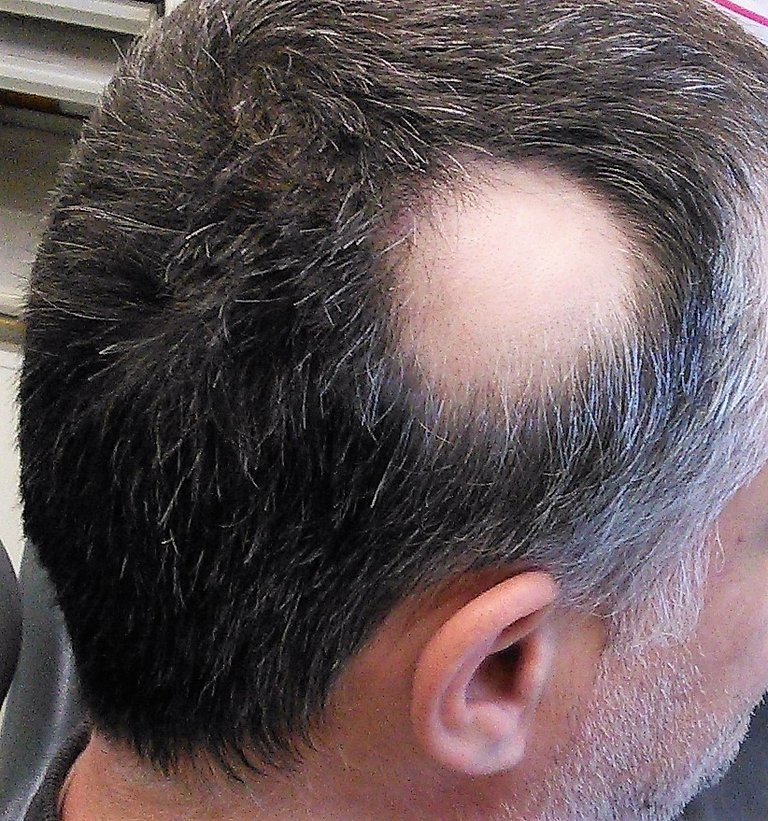Demystifying Hair Loss or Alopecia (Separating Truth from Myths)
Hair loss, or alopecia, is a common concern for many individuals, and the quest for its causes can often lead us down a maze of conflicting information found on the internet. Various theories have emerged, attributing hair loss to factors like over-washing, stress, excessive testosterone, and more. But what's the truth behind these claims, and which should you take seriously?
Actually, hair loss can start from our teenage age, with about 15 to 25% of men suffering from balding before the age of 20 years, about 1 in 4 men suffer hair loss before the age of 30, and about 30 to 50% of men suffer hair loss before the age of 50 years old. Studies have shown that identical twins who are to lose their hairs with do so at the same age.
Hair loss often manifests in three primary patterns: receding hairline, bald patches, and thinning hair. Receding hairlines, also known as bitemporal recession, create a triangular-shaped hair loss pattern starting at the hairline's beginning, forming an M-shaped pattern. It's important to note that less than 5% of men maintain a straight hairline as they age. Another common pattern is hair loss in the form of bald patches, where hair in the middle of the scalp vanishes, or thinning hair, especially common among women.
The human hair is composed of the hair follicle and the hair shaft. In the follicle, there is the dermal papilla which supplies blood nutrient to the hair, and the hair bulb where hair cells multiply to create new hair. The hair shaft is the outer visible part of the hair. Hair has the growth phase known as Anagen where the hair follicle continues to produce hair, followed by another stage known as Catagen (the regression phase) where the hair detaches from the dermal papilla. At the point blood isn't supplying to the hair, and growth is stopped. At this point, the hair follicle shrinks leaving a bulb of keratin acting as root. The resting stage of hair is when the follicles are dormant and the hair isn't growing, this will lead to Exogen, where the hair falls out.
This hair cycle continues at different time for each hair, so it is difficult to know when hair is falling off as patches would not be noticed since other hairs are there to cover the region but when the fall off of hair becomes significant and visible, then the person might be suffering from Androgenetic Alopecia. This occurs because the hair follicle slowly shrink, growth phase reduces, and an increased resting phase. With this there are smaller follicles causing hair not to grow to the scalp.
It is important to know that Dihydrotestosterone (DHT) while important for deep voice and muscle mass is detrimental to head hair growth. 5 alpha reductase found in the sebaceous glands under the scalp is responsible for converting Testosterone into DHT. DHT allows for the secretion of sebum which leads to hair loss. This is usually genetic, and while there is a high chance of being bald if the father is, the mother also can be responsible for transferring these genetic traits.
Another misconception revolves around stress and its connection to Androgenetic Alopecia. Stress, in itself, doesn't cause this type of hair loss. However, some individuals who suffer from Alopecia Areata, an autoimmune condition, may experience it due to stress, though evidence supporting this theory remains limited. Stress could, in some cases, act as a minor trigger for hair loss, alongside other factors such as hormonal changes, viruses, allergies, or toxins.
People can also suffer from another type of hair loss known as Telogen Effluvium which can be induced by stress. This is said to be because when we experience stress, the body goes into survival mode, thereby diverting resources from non-essential parts such as for hair growth to keeping us alive. Once the body goes back to normal, the hair usually grow back within 3 to 5 months.
Understanding the complexities of hair loss is crucial in distinguishing between fact and fiction. While the internet may present various theories, a genetic predisposition, DHT, and sometimes stress play significant roles in different types of hair loss. Seek professional guidance if you experience excessive hair loss, as accurate diagnosis and personalized treatments are the best course of action.
Reference
https://www.ncbi.nlm.nih.gov/books/NBK278957/
https://pubmed.ncbi.nlm.nih.gov/9865198/
https://nationalhair.com/treat-hair-loss-early/
https://www.healthline.com/health/why-do-men-go-bald
https://www.betterhealth.vic.gov.au/health/conditionsandtreatments/patterned-hair-loss
https://www.healthline.com/health/receding-hairline
https://www.nhs.uk/conditions/hair-loss/
https://www.ncbi.nlm.nih.gov/books/NBK557634/
https://www.ncbi.nlm.nih.gov/pmc/articles/PMC1472916/
https://www.ncbi.nlm.nih.gov/pmc/articles/PMC4171668/
https://www.niams.nih.gov/health-topics/alopecia-areata
https://www.ncbi.nlm.nih.gov/books/NBK430848/
https://www.ncbi.nlm.nih.gov/pmc/articles/PMC7320655/


This article is highly interesting, I so much love it.
Thanks for your contribution to the STEMsocial community. Feel free to join us on discord to get to know the rest of us!
Please consider delegating to the @stemsocial account (85% of the curation rewards are returned).
Thanks for including @stemsocial as a beneficiary, which gives you stronger support.